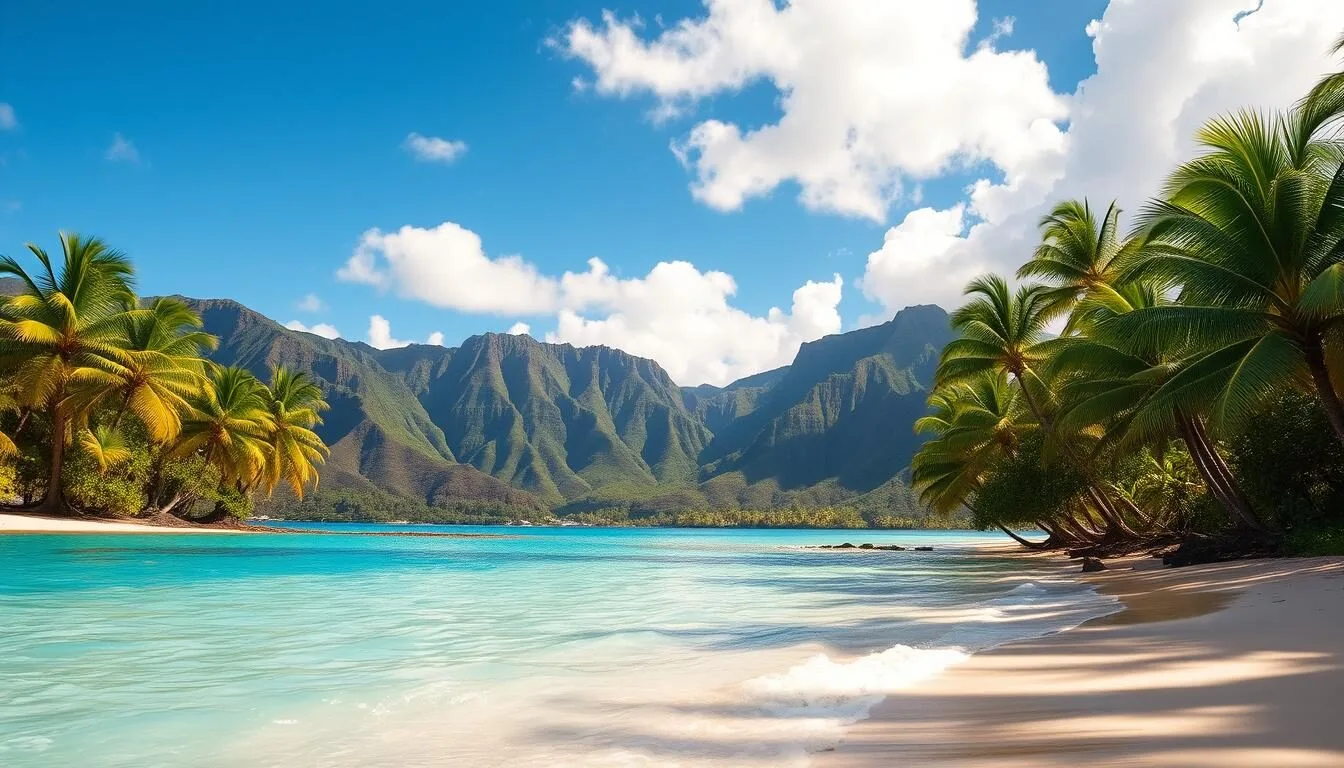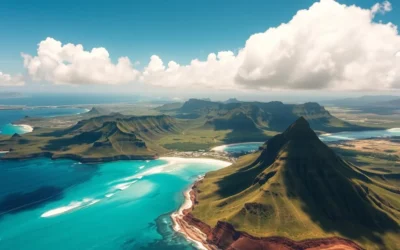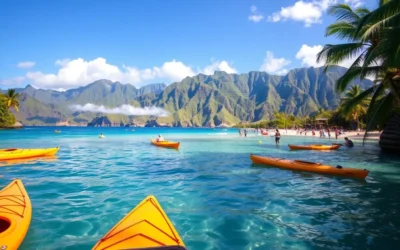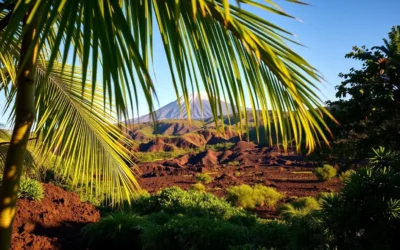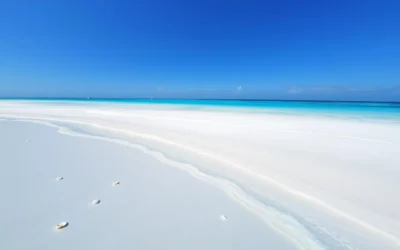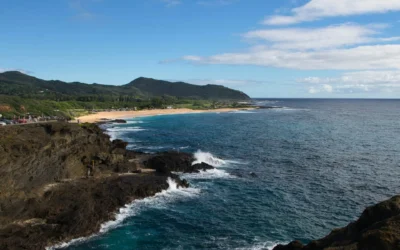✓ Accommodations ✓ Flights ✓ Rental Cars ✓ Tours & Activities
Imagine yourself on a tropical island, surrounded by lush greenery and crystal-clear waters. You’re in Oahu, and you’re about to experience the perfect blend of adventure and relaxation. But, when is the best time to visit this island paradise?
The truth is, there’s no “bad time” to visit Oahu. The island basks in sunshine almost year-round, with comfortable temperatures even in the winter months. However, understanding the nuances of each season can help you make the most of your trip.
As you plan your trip, consider the unique characteristics of each season, from weather patterns to tourist crowds and special events. By doing so, you’ll be able to tailor your travel plans to your preferences and make the most of your time on the island.
Understanding Oahu’s Year-Round Climate
Oahu’s geography plays a crucial role in shaping its climate. This tropical island is characterized by diverse microclimates that significantly influence the weather in different areas.
The Tropical Paradise Weather Overview
Oahu is generally warm and sunny year-round, making it an attractive destination for tourists. However, the island’s climate is not uniform, with variations in temperature and precipitation across different regions.
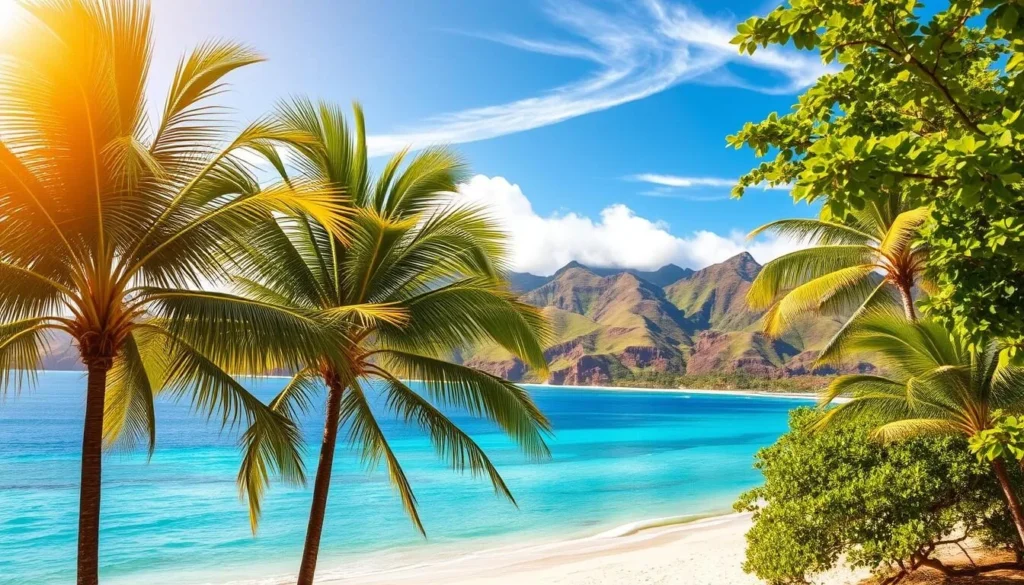
Windward vs. Leeward: Oahu’s Microclimates
The windward side of Oahu, including areas like Kailua and Kaneohe, is often cooler and wetter than the leeward side. In contrast, the leeward side, such as Waikiki and Ko Olina, enjoys drier and sunnier conditions. Understanding these microclimates can help you plan your trip according to your weather preferences.
- The windward side receives more rainfall and is lushly vegetated.
- The leeward side is popular for beach activities due to its sunny weather.
- The North Shore experiences dramatic seasonal changes, especially in ocean conditions.
By recognizing these differences, you can choose the best place to stay and activities to enjoy based on your preferences for weather and climate conditions on the island.
Winter in Oahu (December-February)
The winter season in Oahu, spanning from December to February, offers a distinct tropical experience. This period is marked by cooler temperatures and a festive atmosphere, attracting visitors from around the world.
Weather Patterns: Cooler and Occasionally Rainy
Oahu’s winter weather is characterized by cooler temperatures, ranging from 70°F to 85°F (21°C to 30°C), and occasional rain showers. While it’s the cooler season, the temperatures remain relatively mild compared to many other parts of the world.
North Shore Surfing: Big Wave Season
Winter is the big wave season on Oahu’s North Shore, making it a paradise for surfers. The massive waves attract spectators and professionals alike, creating an electrifying atmosphere.
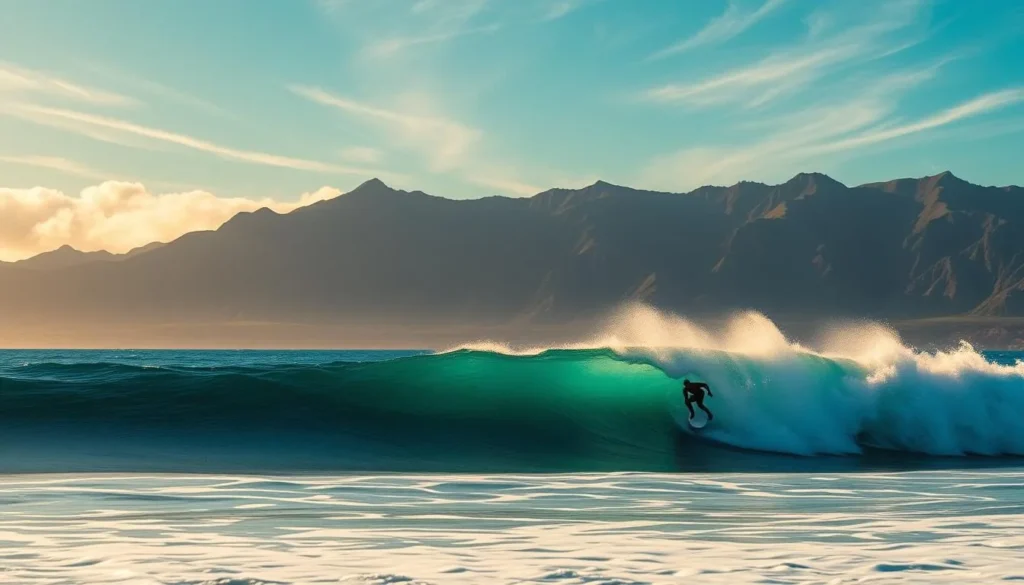
Holiday Crowds and Winter Events
Winter is peak tourist season in Oahu, with the holiday season bringing in large crowds. Events like the Honolulu Marathon and the Honolulu City Lights Trolley Tour are highlights. Visitors should plan ahead, as this is the busiest time of year, with tourists flocking to the island for the New Year celebrations.
- The holiday high season, from mid-December to early January, sees significant crowds and premium pricing.
- “Snowbirds” from colder climates visit Oahu, seeking refuge from harsh weather.
- Unique events include the Honolulu Marathon, festive displays, and New Year’s fireworks over Waikiki Beach.
Spring in Oahu (March-May)
The spring months in Oahu are marked by pleasant weather conditions, creating a perfect backdrop for a memorable vacation. As the island transitions from winter, the temperatures become warmer, and the rainfall decreases, making it an ideal time to enjoy Oahu’s outdoors.
Weather Conditions: Warm and Relatively Sunny
During the spring, Oahu experiences warm and relatively sunny weather, with average highs in the mid-70s to mid-80s Fahrenheit (23-30°C). This period is characterized by lower humidity compared to the summer months, making it comfortable for tourists to explore the island’s beaches, trails, and cultural sites.
Whale Watching Opportunities
Spring is a prime time for whale watching in Oahu, as humpback whales migrate to the waters around the Hawaiian Islands to mate and give birth. Visitors can take guided tours to witness these majestic creatures up close, providing an unforgettable experience.
Avoiding Golden Week Crowds
Late April to early May is a busy period on Oahu due to Japan’s “Golden Week,” a week-long holiday that attracts many Japanese tourists. To avoid the crowds, consider planning your travel during early April or mid-May. Understanding the best time to visit can help you make the most of your trip and avoid the influx of tourists during Golden Week.
| Period | Weather | Crowds | Activities |
|---|---|---|---|
| Early April | Warm & Sunny | Less Crowded | Beach Activities, Hiking |
| Late April (Golden Week) | Warm | Crowded | Tourist Attractions, Cultural Events |
| Mid-May | Sunny | Moderate | Whale Watching, Outdoor Events |
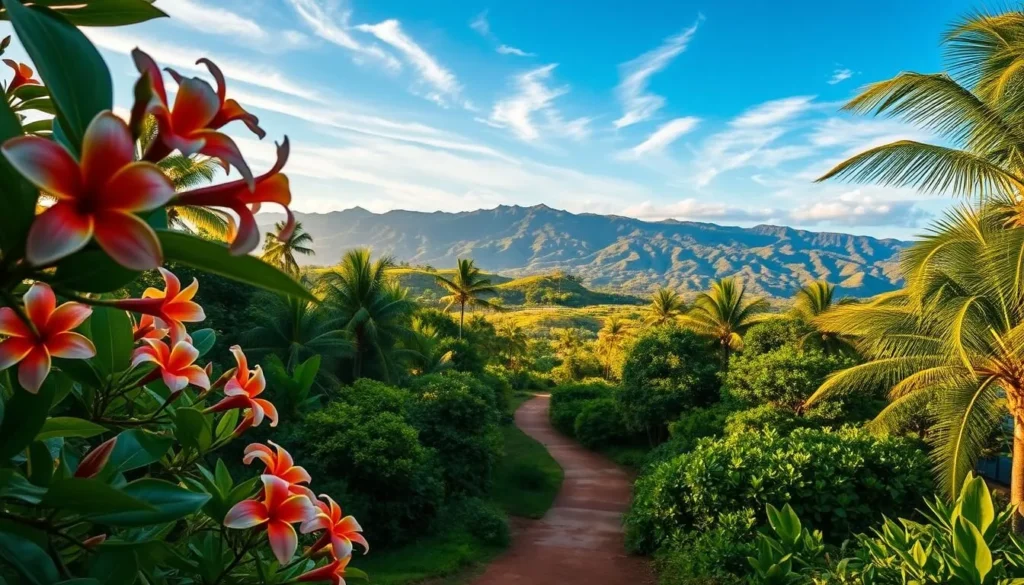
Summer in Oahu (June-August)
Summer is here, and Oahu is buzzing with energy, offering a unique experience for visitors. The island’s peak tourist season is in full swing, bringing with it a vibrant atmosphere and a wide range of activities.
Weather Forecast: Hot, Sunny, and Dry
Oahu’s summer weather is characterized by hot temperatures, plenty of sunshine, and dry conditions. You can expect average highs in the mid-80s to low 90s Fahrenheit, making it ideal for beachgoers and outdoor enthusiasts. With minimal rainfall during this time, you can plan your days with confidence, enjoying the island’s beautiful landscapes and attractions.
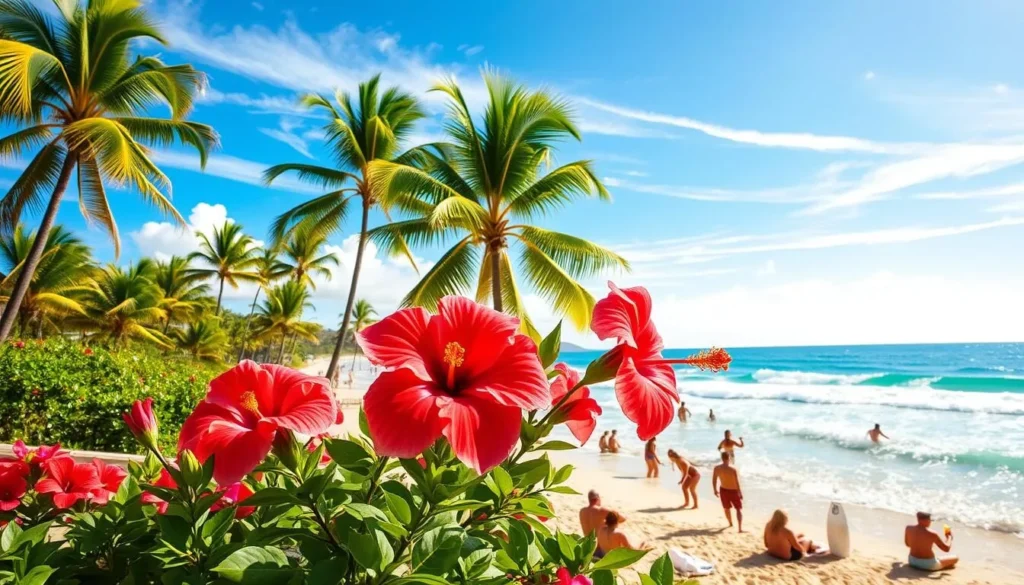
Beach Activities and Gentle Ocean Conditions
Summer is a great time to enjoy Oahu’s beaches, with calm ocean conditions and warm waters perfect for swimming, snorkeling, and surfing. Popular spots like Waikiki Beach, Hanauma Bay, and Kailua Beach are bustling with activity, while the North Shore offers a more relaxed atmosphere. Whether you’re a seasoned surfer or a beginner, the gentle waves and pleasant weather make it an ideal time to enjoy the island’s renowned beaches.
Peak Tourist Season: What to Expect
As Oahu’s peak tourist season, summer brings larger crowds to popular attractions, beaches, and hiking trails. You can expect busy conditions at famous spots like Diamond Head Crater and the Polynesian Cultural Center. To make the most of your visit, plan ahead by making reservations for popular restaurants and activities, and consider visiting early in the morning or later in the evening to avoid the crowds. With a little planning, you can still have a fantastic time exploring the island and enjoying its many attractions.
Fall in Oahu (September-November)
The fall season in Oahu offers a compelling mix of good weather, reduced crowds, and cost savings. As the summer months come to a close, the island transitions into a shoulder season that is ideal for travelers looking for a more relaxed experience.
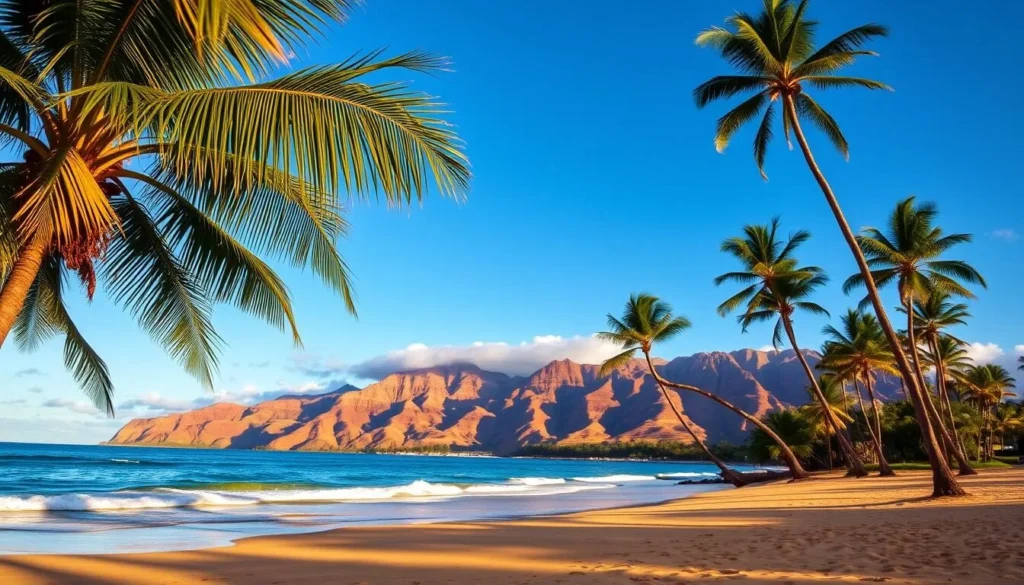
Weather Overview: Warm with Occasional Showers
During the fall, Oahu’s weather remains warm, with average highs in the mid-80s (°F). While there can be occasional showers, they are typically brief and followed by sunshine. This period is characterized by a gentle trade-off between warmth and occasional rain showers, making it an excellent time for outdoor activities.
Off-the-Beaten-Path Experiences
With fewer tourists, fall is an excellent time to explore Oahu’s less crowded attractions. You can enjoy hiking in the lush mountains, visit local farmers’ markets, or take a road trip along the island’s scenic routes. Many popular spots become more accessible, allowing for a more personalized experience.
Shoulder Season Benefits
One of the significant advantages of visiting Oahu in the fall is the potential for savings. Hotel rates drop after Labor Day, and you can find deals on travel and accommodations. Airlines and tour operators often offer special promotions to attract visitors during this period. You can enjoy a more relaxed time to visit popular attractions without the peak season crowds, making your travel experience more enjoyable and budget-friendly.
- Enjoy lower hotel prices, with potential savings of 20-40% compared to summer rates.
- Take advantage of fall deals on travel and activities.
- Experience the island with fewer crowds, making your visit more relaxed.
Oahu, Hawaii: Best Months for a Weather-Savvy Trip
To make the most of your trip to Oahu, it’s essential to consider the island’s climate and plan accordingly. The island offers a range of experiences throughout the year, catering to different preferences and interests.
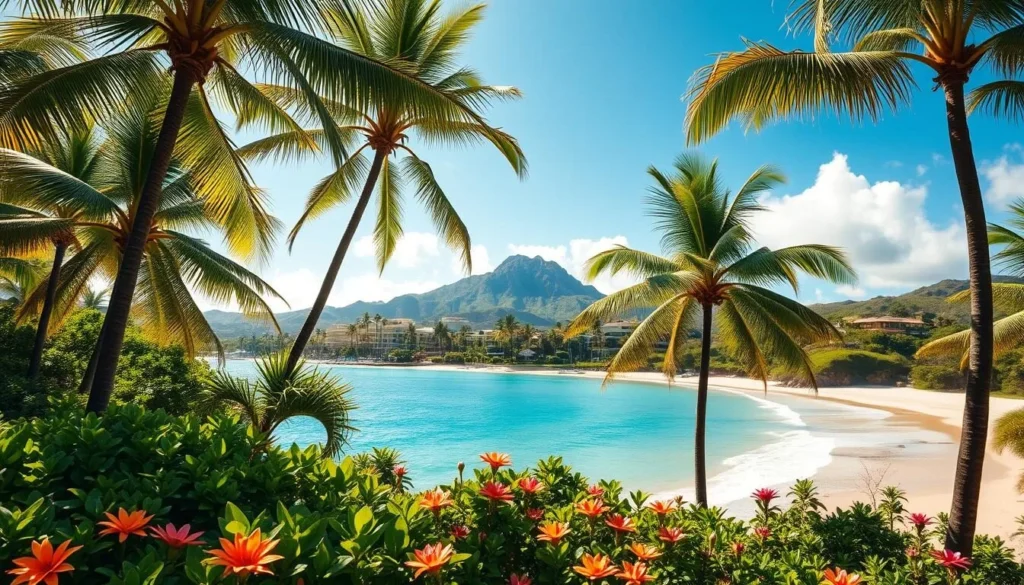
For Beach Lovers and Sun Seekers
If you’re looking for sun-kissed beaches and warm weather, the summer months (June through August) are ideal. The ocean conditions are generally calm, making it perfect for swimming, snorkeling, and other water activities. Beach activities peak during this time, with gentle ocean conditions and warm temperatures.
For Budget-Conscious Travelers
For those on a budget, considering the shoulder season (April-May and September-November) can be beneficial. The weather is still pleasant, with occasional rainfall, and prices for accommodations tend to be lower compared to peak season. You can enjoy various activities without the high-season costs.
For Those Who Want to Avoid Crowds
If crowds aren’t your thing, visiting during the spring (March-May) or fall (September-November) can provide a more relaxed experience. These periods offer a balance of good weather and smaller crowds, making it easier to explore the island’s attractions. You can enjoy hiking, whale watching, or simply exploring the island without the peak season hustle.
For Activity-Specific Travelers
Oahu caters to various interests and activities throughout the year. For surfing enthusiasts, the winter months (November through February) are the best, with massive swells on the North Shore. Whale watching is best between January and March, while hiking is more comfortable during the spring and fall. Snorkelers and divers enjoy the best visibility during the summer months when the ocean is calmest. The Hawaiian Islands offer a diverse range of experiences based on the time of your visit.
- Surfers should head to Oahu’s North Shore between November and February for the legendary waves.
- Whale watching enthusiasts will find January to March ideal for spotting humpback whales.
- Hikers prefer the spring and fall for comfortable temperatures and fewer crowds.
- Snorkelers and divers enjoy the summer months for the best underwater visibility.
By planning your trip according to your interests and preferences, you can make the most of your time on this beautiful island.
Conclusion: Planning Your Perfect Oahu Getaway
The key to enjoying Oahu lies in choosing the right time to visit based on your preferences. Whether you value perfect beach weather, budget-friendly options, or specific activities like surfing or whale watching, Oahu has something to offer every traveler. For most visitors, the shoulder seasons of April-May and September-October provide the ideal balance of good weather and manageable crowd levels.
When planning your trip, consider that major holidays like Christmas, New Year’s, and Thanksgiving bring significant crowds to Oahu’s popular destinations. However, traveling during the off-season can be a great way to avoid crowds and enjoy a more relaxed experience. Oahu’s microclimates also mean you can often find your preferred weather conditions somewhere on the island, regardless of the time of year you visit.
To make the most of your trip, allow flexibility in your itinerary for weather variations, especially during the winter months. Consider planning around special events like the Honolulu Festival or Vans Triple Crown of Surfing if these cultural experiences interest you. No matter when you choose to visit, you’ll return back home with memories of Oahu’s stunning natural beauty and warm aloha spirit. Book your accommodations in advance if your travel dates coincide with peak periods or major events. Ultimately, there’s no wrong time to enjoy Oahu’s tropical paradise.
The above is subject to change.
Check back often to TRAVEL.COM for the latest travel tips and deals.
